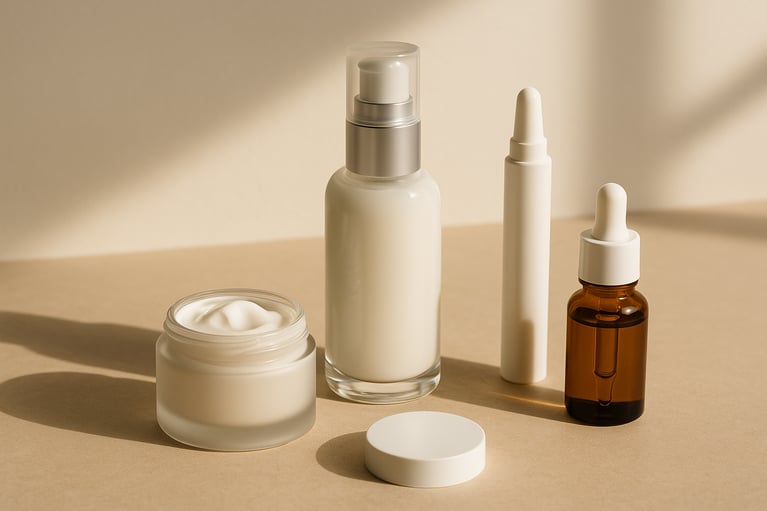With online and Amazon now accounting for more than 41% of all beauty and personal care product sales, what used to be a supplementary channel is now the main stage. From skincare startups to legacy cosmetic houses, every brand is being forced to rethink how it sells and grows.
So, where’s the growth coming from? What are the consumer expectations shaping the industry? And how can you turn these insights into strategy?
Let’s break down the top trends defining beauty ecommerce in 2025 and what you should do about them.
1. Personalization to make every customer feel special
The days of one-size-fits-all beauty marketing are over. Consumers expect brands to recognize their skin type, tone, concerns and preferences.
AI and machine learning now power tools that recommend customized skincare routines, match shades to selfies, and even tailor product bundles based on browsing habits. This is one-to-one marketing at scale.
The results speak for themselves: 80% of consumers say they're more likely to buy from brands that personalize their experiences.
What this means for your brand:
Don’t just segment – individualize. Start with simple tools like skin quizzes or preference surveys, then use that information to customize everything from product suggestions to email content. The more you understand your customers as individuals, the more effectively you can serve them.
Want to give your customers a personalized experience that drives sales? Our growth marketing team can help you use your data to create real results.
2. Clean beauty and conscious consumerism
Today’s beauty shoppers read the ingredient list like it's a contract. They want to know where your product comes from, what’s in it and what it stands for. They're looking for brands that can explain the science behind their formulations without hiding behind marketing buzzwords.
The numbers tell a story: 66% of consumers now actively seek sustainable brands, and more than half are willing to pay a premium for products that align with their values.
Even major retailers are responding to this demand. Walmart, for example, has launched curated clean beauty collections that meet strict ingredient standards.
What this means for your brand:
Back your sustainability claims with third-party certifications, clear labeling and packaging innovations that prove your values. When you can't claim something, don't try to imply it as customers will notice. Ethical ingredients, clear labeling and earth-friendly packaging build long-term trust and loyalty.
3. Social commerce is the fastest-growing channel
TikTok is the new makeup counter. Instagram is the new storefront. Shoppers no longer leave the app to buy what they see, they just tap.
The statistics are staggering: 68% of beauty purchases are now driven by social commerce. TikTok users are especially likely to convert, with 89% having purchased beauty products they discovered on the platform.
Micro-influencers, shoppable livestreams and viral content are fueling real-time conversion. When micro-influencers genuinely use and recommend products, their endorsements feel authentic rather than transactional. Instead of static product pages, you can now demonstrate products in real-time, answer questions immediately and create urgency through limited-time offers.
What this means for your brand:
Think like a retailer, not just a creator. Treat social commerce as a high-converting retail storefront. Invest in a platform-specific content calendar, create content that naturally integrates shopping opportunities and make the purchase process as seamless as possible.
4. New technology making shopping easier
The lines between in-store and online experiences are blurring thanks to Augmented Reality-powered virtual try-ons, voice commerce and inclusive UX tools.
Voice shopping is another emerging trend that's gaining traction. Customers can reorder favorites or discover new products simply by asking their smart speakers.
Estée Lauder’s voice-activated assistant is one example of how brands are enhancing accessibility and experience at once.
What this means for your brand:
Bringing the try-before-you-buy experience online lowers hesitation and boosts confidence. When customers can interact with products virtually, they're more willing to buy without physically touching or testing them first.
5. Inclusive beauty as more than a buzzword
Consumers expect brands to reflect a wide spectrum of skin tones, gender identities and age groups.
Brands that champion inclusivity in both product lines and marketing campaigns are tapping into underserved but powerful communities. But true inclusivity goes beyond just offering more shade ranges. It means considering different skin concerns, cultural beauty practices and accessibility needs in product development.
What this means for your brand:
Diversity isn't optional. Inclusion grows your total addressable market and connects with communities that were long underserved.
6. The psychology of self-care and emotional spending
The beauty ritual is becoming a mental health ritual. When customers buy beauty products, they're not just purchasing functional items; they're investing in how they want to feel. Smart brands understand this psychology and use it to elevate product positioning.
The key is authenticity. Customers can sense when self-care messaging is genuine. You need to truly understand your customers' emotional needs and create products that deliver on those promises.
What this means for your brand:
Connect the dots between your product and the emotional benefit. When customers feel that your products contribute to their overall well-being, they're more likely to become repeat buyers and brand advocates. This emotional connection is often more valuable than any functional product benefit.
7. Using data to grow your beauty ecommerce brand
Every click, quiz, and cart tells a story. Lean on your first-party data to understand what customers actually want. Use it to guide product development, marketing personalization and inventory decisions.
Measure success by how engaged customers are. Engagement metrics like time on site, pages per session and return visit frequency often predict long-term value better than immediate purchase behavior.
What this means for your brand:
Stop guessing. Use your data to refine everything. Leverage it to choose what products to launch next and to create marketing that actually works by focusing on building relationships, not just driving transactions.
8. Sustainable fulfillment and green logistics
Sustainability doesn’t end at the checkout. Beauty shoppers — especially Gen Z and millennials — expect your sustainability efforts to extend to packaging, shipping and supply chain practices.
Sustainable operations can actually save money while attracting customers. Efficient packaging reduces shipping costs, and optimized logistics can improve delivery times while reducing environmental impact. These operational improvements create win-win scenarios where doing good also drives business value.
What this means for your brand:
Green your operations, not just your ingredients. You can offer sustainable options without compromising on speed or convenience will have significant competitive advantages. This might mean investing in local fulfillment centers or partnering with eco-conscious logistics providers.
9. Viral culture and fast-moving trends
“Latte makeup,” “mob wife aesthetic,” “blueberry nails” — these micro-trends can appear overnight and drive massive purchasing decisions within days or weeks.
Beauty brands that plug into cultural moments can ride viral waves to explosive growth. This requires close monitoring of influencer activity and cultural zeitgeist.
The challenge is distinguishing between fleeting fads and lasting trends. Not every viral moment deserves a product launch, but missing the right moment can mean missing significant growth opportunities.
What this means for your brand:
Operate like a media company. Keep trendwatching and speed-to-market at the core of your strategy.
10. The rise of male beauty and under-tapped markets
Men are investing more in skincare and cosmetics. Often quietly, but consistently. This is driven by platforms like TikTok and evolving cultural norms.
This change reflects the growing demand from men who are increasingly interested in sophisticated skincare routines. For instance, leading companies such as L'Oréal and Kiehl's have developed product ranges specifically designed for male consumers, offering solutions that span from daily moisturizers to advanced anti-aging treatments.
What this means for your brand:
Speak their language. This audience often has different motivations and shopping behaviors than traditional female beauty consumers. Prioritize efficacy, clarity and subtle messaging to win over this expanding audience.
11. Unified commerce is the future of brand experience
Customers want options. They might research online but buy in-store, or vice versa. They expect their preferences and purchase history to follow them across all touchpoints.
In-store events, exclusive products and trial experiences keep customers coming back. Physical experiences create emotional connections that are difficult to replicate online.
Some prefer the convenience of online ordering with in-store pickup. Others want to browse online but make final decisions in-store. The key is supporting all these preferences seamlessly.
What this means for your brand:
You don’t need to choose between digital and physical. Start building experiences that move fluidly across online and offline environments.
What to do next
You don’t need to chase every trend. But you do need to pick the right ones for you and your customers.
Cart.com’s growth marketing team lives and breathes beauty ecommerce. We’ll help you translate these insights into sustainable, scalable growth. Let's talk about how Cart.com can help you stay ahead of the competition.
Subscribe to our emails for the latest industry insights!
By entering your email, you agree to receive marketing emails from Cart.com





